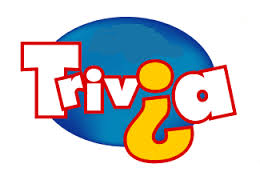
Today’s Trivia is Part 2 of my notes compiled from Carol Buswell’s talk to EWGS on April 7th:
“We genealogists must remember that governmental archives must, by mandate, keep and preserve the records of the governmental doings of that agency and that’s mostly pretty boring stuff,” Carol smiled and said.
How do you figure out which libraries, historical societies and museums might have the information you seek? “Take the papers of the famous architect, Frank Lloyd Wright, for instance,” Carol said. “Some of his papers are in the National Archives, some in the Library of Congress, some in the Frank Lloyd Wright Museum, some in the Getty Research Institute….well, you get the idea,” she quipped. “No one repository or source will furnish all there is to know or that you want to know on a given topic; you MUST keep looking for new sources.”
On the other hand, government archives keep EVERYTHING created in government offices that is deemed “permanent.” The rest is destroyed. So it is easier to figure out exactly where government-created materials will be than it is in a library, historical society, or museum. It will be in the archives of that government!
Critical to finding anything in an archives is using the card catalog. In the case of our U.S. National Archives, that address is www.catalog.archives.gov . “Just go there and poke around,” Carol advised, “and use a different mindset than you’ve used before.” With 27 billion documents of primary sources, using the catalog is a must, so we must learn to use the catalog and use it creatively. “Looking at something without understanding what you’re looking at is like looking at a black hole,” Carol laughed.
Carol shared some statistics with us. “Less than 1% of material held by the National Archives has been digitized; most stuff is still in boxes and some of those boxes are opened, on average, once every 87 years! NARA has the records of every federal agency that ever existed….. If those records survived and were turned in.”
One good use of archival records is for furnishing background to enrich the timeline of life for an ancestor. “So they were born in 1851 and died in 1910, what was going on around them in their lifetime?” Carol asked. “A wonderful feature of the National Archives is the website www.docsteach.org. At this website you’ll have access to thousands of primary sources…. Letters, photographs, speeches, posters, maps, videos and other document types…spanning the course of American history and we’re always adding more,” as was shown in Carol’s slide from the home page of this website.
(to be continued/completed next week)
TO: Donna Potter-Phillips
Re: 5/10 Trivia–notes from Carol Buswells talk to EWGS on 4/7
You call this post “Part 2” but looking back on WA State GS Blog for the last 5 weeks I cannot find Part 1 and would really like to read the story in its entirety. Could you forward Part 1 to me please?? Looking forward to Part 3 coming soon too! Thanks! Lin Hines OlyGS
Part 1 is here: https://wasgs.org/blog/2018/04/24/tuesday-trivia-51/